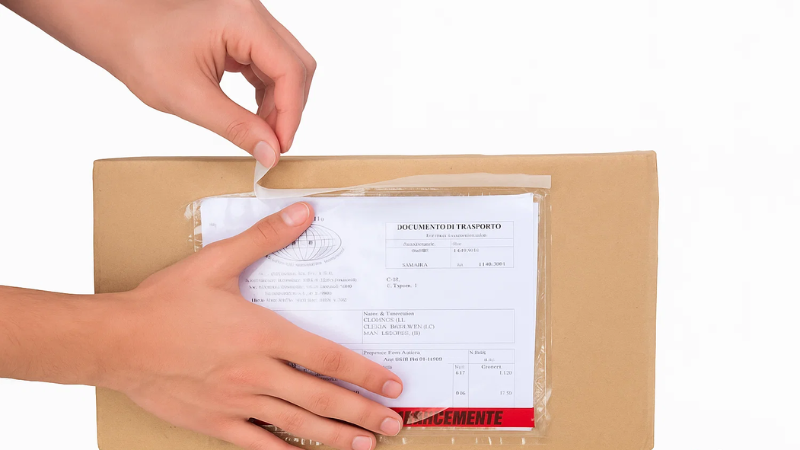The risk of mail theft is increasing, with attackers targeting postal deliveries to obtain confidential information. Last year, the U.S. Postal Inspection Service launched Project Safe Delivery, resulting in approximately 4,754 arrests and 4,228 convictions tied to mail theft, assaults, and robberies—highlighting the urgency of mail protection.
To combat these threats, security envelopes with anti-tamper envelope features have become an essential tool in protecting sensitive mail. With tamper-evident features, these envelopes help ensure that confidential documents reach their intended recipients intact. This article explores the key features of security envelopes and how they contribute to preventing mail tampering!
Why Mail Security Still Matters in the Digital Age?
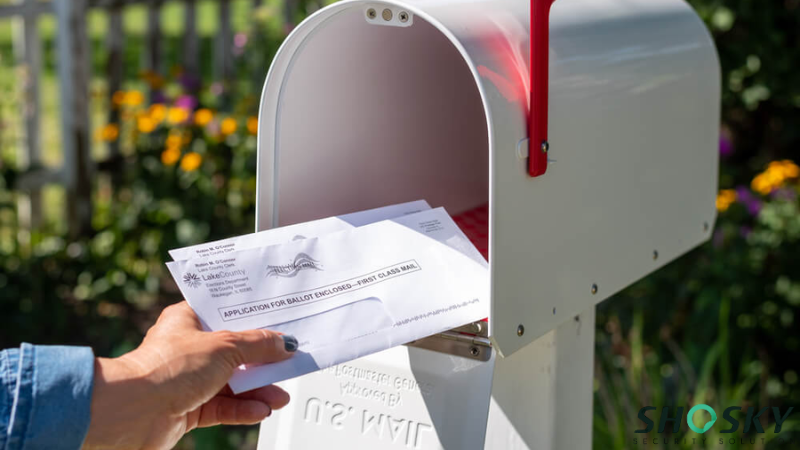
Even with digital communication, physical mail remains vital for personal and business correspondence. Important documents, contracts, and financial statements still travel through the postal system, making them a target for theft and tampering. Tamper-proof envelopes provide protection against unauthorized access and tampering.
Here is the detail about common risks and how security envelopes help with protecting sensitive information:
- Theft: Criminals can intercept letters, checks, or sensitive documents. Security envelopes deter theft by showing signs of tampering.
- Tampering: Standard envelopes can be opened and resealed. Tamper-evident seals and frangible materials make interference visible.
- Document Alteration: Exposed documents can be copied or changed. Opaque materials and security printing prevent unauthorized viewing.
- Regulatory Compliance: Some industries must meet strict data protection rules. Security envelopes help safeguard sensitive information in transit.
By combining visible deterrents and hidden security features, security envelopes ensure sensitive documents reach the intended recipient safely. They protect data while boosting confidence in compliance and operational integrity.
5 Key Features of Security Envelope
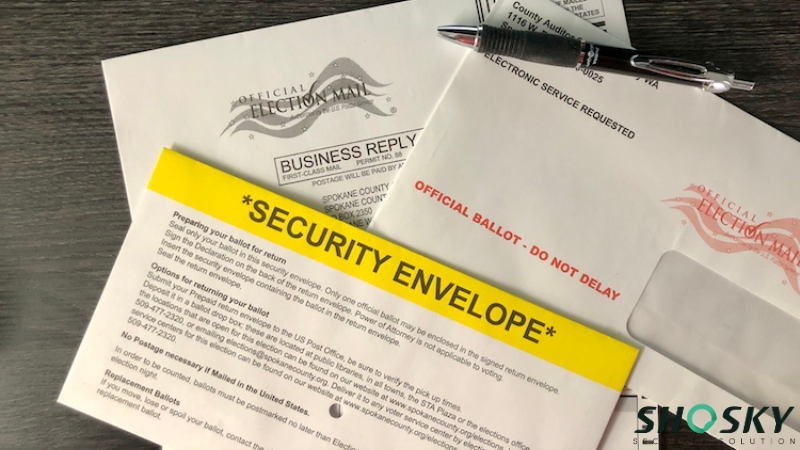
To keep sensitive mail safe, security envelopes use multiple protective elements. These features make tampering visible and help documents stay confidential in transit. The five features below show how they maintain document safety and confidentiality.
1. Tamper-Evident Seals
Tamper-evident security seals are adhesive closures designed to show any attempt at interference. When someone tries to open the envelope, the seal breaks or leaves visible marks, immediately indicating unauthorized access. This makes it difficult for anyone to tamper with mail unnoticed.
These seals act as a first line of defense against mail theft and tampering. For businesses sending sensitive documents, they provide reassurance that confidential information will reach the intended recipient safely and that any interference is easy to detect.
2. Void Messaging & Color-Changing Inks
Void messaging and color-changing inks add an extra layer of security by alerting recipients to tampering. If an envelope is opened or manipulated, a “VOID” message appears, or the ink changes color, clearly signaling interference with the mail.

These tamper-technology features help prevent unauthorized document access and discourage attempts to alter contents. It is particularly useful for envelopes carrying sensitive documents, financial statements, or legal correspondence where maintaining integrity is crucial.
3. Frangible Materials
Frangible materials are specially designed paper or films that tear easily if someone tries to open the envelope. This ensures the envelope cannot be resealed without leaving obvious signs of damage.
By using frangible materials, organizations can protect critical documents during transit. Any attempt to access the envelope is immediately visible to recipients and auditors, reducing the risk of mail theft or document tampering.
4. Opaque Materials & Security Printing
Opaque materials and security printing prevent anyone from viewing or copying contents without opening the envelope. These materials block light and obscure sensitive information, guarding against casual prying or accidental exposure.
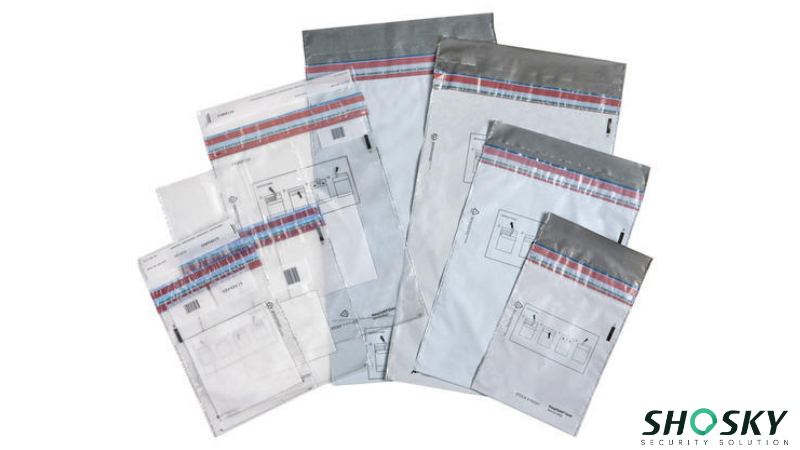
Security printing can include patterns, lines, or microtext that make duplication or scanning difficult. Combined with opaque materials, these features maintain the confidentiality and integrity of sensitive documents during delivery.
5. Watermarking & Microtext
Watermarking and microtext are anti-counterfeiting features embedded into the envelope. Watermarks often appear under specific light, while microtext is tiny, hard-to-replicate text that adds a verification layer against forgery.
These features make it easier to confirm the authenticity of envelopes and documents. They are particularly valuable for organizations handling legal papers, financial statements, or other critical documents that require proof of integrity and trustworthiness.
Advanced Secure Envelope Technology
Modern secure envelopes integrate advanced technologies that combine physical safeguards with digital verification. The following features show how they raise the standard for document protection.
1. RFID/NFC-Enabled Tracking
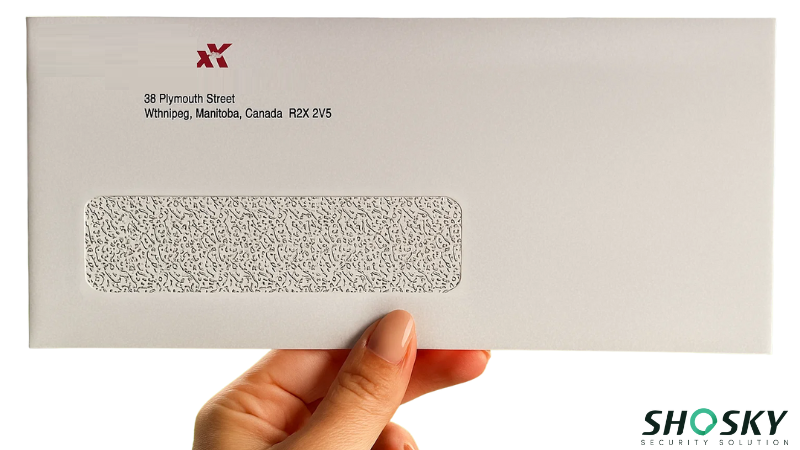
RFID and NFC are now standard in logistics for global brands. FedEx, a well-known logistics provider, uses RFID tags to track shipments in real time. They have reported cutting down on lost and delayed parcels. Their SenseAware ID uses RFID and Bluetooth sensors to send location updates every few seconds.
For secure envelopes, this same technology provides a digital audit trail. Organizations can confirm when an envelope is dispatched, in transit, and delivered, reducing risks of tampering or loss while building greater trust with recipients.
2. QR Code Authentication for Document Verification
QR codes have become a standard tool for quick access to information, and their application extends to enhancing the security of mailed documents. By embedding a unique QR code on an envelope, recipients can scan it to verify the authenticity of the sender and confirm that the contents have not been tampered with.
DocuSign, a leader in digital agreements, uses QR codes to streamline document access and verification. This approach has helped organizations reduce errors and confirm the authenticity of signed contracts more efficiently. This method is particularly beneficial for businesses and legal institutions that handle sensitive information.

3. Holographic Seals and Labels for Added Security
Holographic seals and labels serve as a powerful deterrent against tampering and counterfeiting. Their complex designs are challenging to replicate, making them an effective tool in protecting valuable documents.
Incorporating these features into secure envelopes adds an extra layer of security. Any attempt to open or alter the envelope would disrupt the holographic pattern, providing immediate visual evidence of tampering.
4. Integration with Chain-of-Custody Systems
Maintaining a documented chain of custody is crucial in legal and investigative processes to ensure the integrity of evidence. Research published in Forensic Science International highlights that lapses in documentation are a leading cause of evidence being challenged in court. This involves tracking every individual who handles the evidence, from collection to presentation in court.
Secure envelopes integrated with digital chain-of-custody systems provide a clear audit trail of each handoff. Every stage—from collection to storage and transfer—can be logged and verified. This not only protects the authenticity of the documents but also helps legal teams demonstrate compliance and strengthen the credibility of their case in court.
Secure Mailers vs. Standard Envelopes
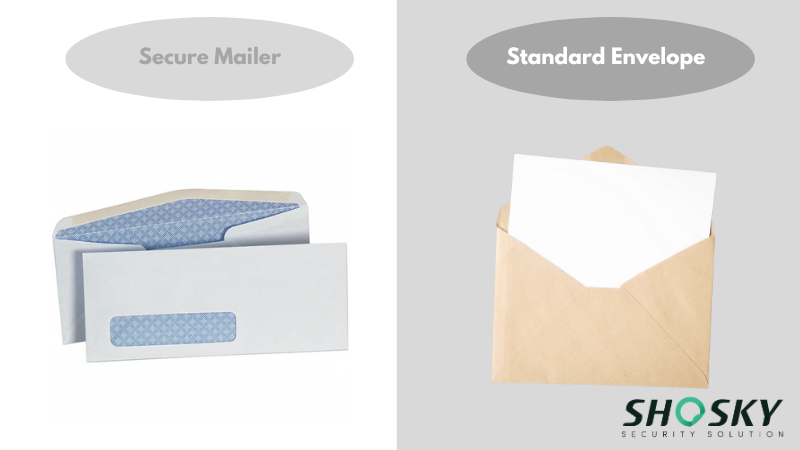
Standard envelopes offer basic coverage, but secure mailers are built to block tampering, theft, and unauthorized access. Knowing the difference helps organizations protect sensitive communications. The following table highlights key differences between standard envelopes and secure mailers:
| Feature | Standard Envelopes | Secure Mailers |
|---|---|---|
| Material | Lightweight paper | Frangible, opaque, reinforced |
| Closure | Basic adhesive flap | Tamper-evident seals, void messages |
| Security | Minimal | Watermarks, holograms, RFID/NFC |
| Protection | Low – easy to open unnoticed | High – shows tampering clearly |
| Use | Everyday letters, flyers | Legal, financial, confidential docs |
Choosing a secure mailer over a standard envelope ensures that sensitive documents remain protected throughout transit. Organizations handling critical information, such as financial records, legal contracts, or confidential correspondence, benefit from features that deter tampering, maintain document integrity, and support compliance with data protection regulations.
Industry Applications of Secure Envelope Technology
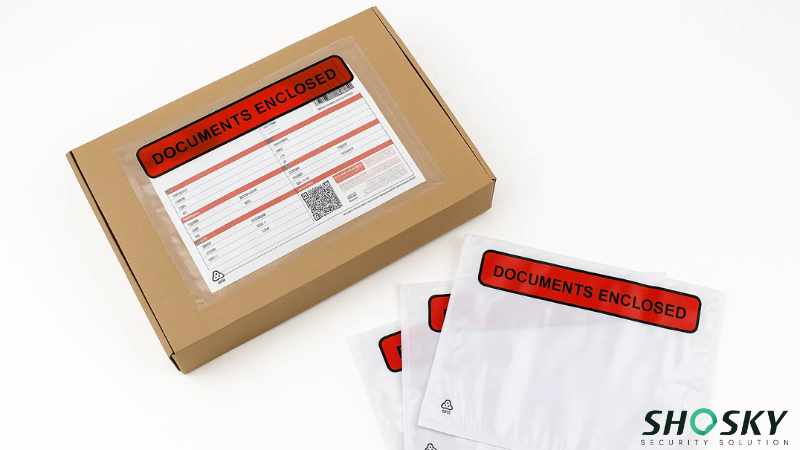
Secure envelope technology supports a wide range of industries that handle sensitive information. The following examples show how different sectors apply them in daily operations:
- Legal & Notary Services – Protecting Contracts and Legal Documents: Secure envelopes with tamper-evident seals and opaque materials safeguard contracts, deeds, and confidential papers. Law firms can also use QR code authentication for added protection, keeping legal mail secure from theft or tampering.
- Financial Institutions – Safeguarding Checks and Confidential Statements: Banks use secure envelopes to protect checks, statements, and financial records. Features like holographic seals and RFID tracking prevent tampering and help verify that sensitive data hasn’t been altered.
- Government & Military – Secure Correspondence and Sensitive Data: Secure envelopes protect classified documents and communications with tamper-evident seals, tracking, and chain-of-custody systems, ensuring only authorized users can access sensitive government or military data.
- Healthcare – Protecting Patient Data and Test Results: Healthcare providers use secure envelopes to protect medical records and test results. Opaque materials, tamper-evident seals, and QR code verification maintain patient privacy and regulatory compliance.
Secure envelope technology is vital across many industries, from contracts and checks to medical records and government data. With features like tamper-evident seals, QR codes, and RFID tracking, organizations can protect sensitive information and maintain trust.
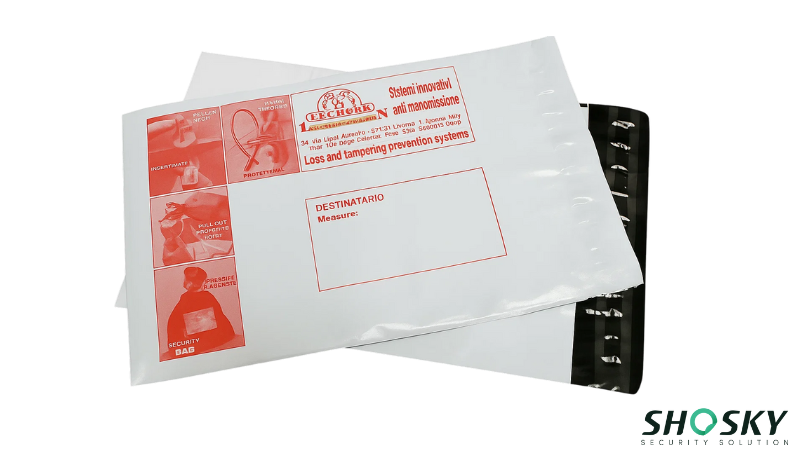
FAQs
Are security envelopes reusable?
No, tamper-evident seals prevent reopening, keeping documents secure.
How can I verify an envelope’s authenticity to avoid mail theft?
Check seals, void messaging, or QR codes to confirm it hasn’t been tampered with.
Are security envelopes compliant with postal regulations for sensitive information?
Yes, they meet USPS standards and keep sensitive information stored securely.
Conclusion
Protecting sensitive mail is crucial for businesses and individuals alike. Tamper-evident solutions like secure envelopes with secure envelope technology features ensure documents reach their destination safely. By using these envelopes, you can guard critical information, prevent mail theft, and confidently send confidential documents.
Explore Security Envelope Features with Shosky Security
When it comes to protecting sensitive documents and preventing mail theft, Shosky Security offers secure envelopes designed with secure envelope technology. Our solutions help businesses and individuals safeguard confidential information. Contact us today to request a sample or consultation!
